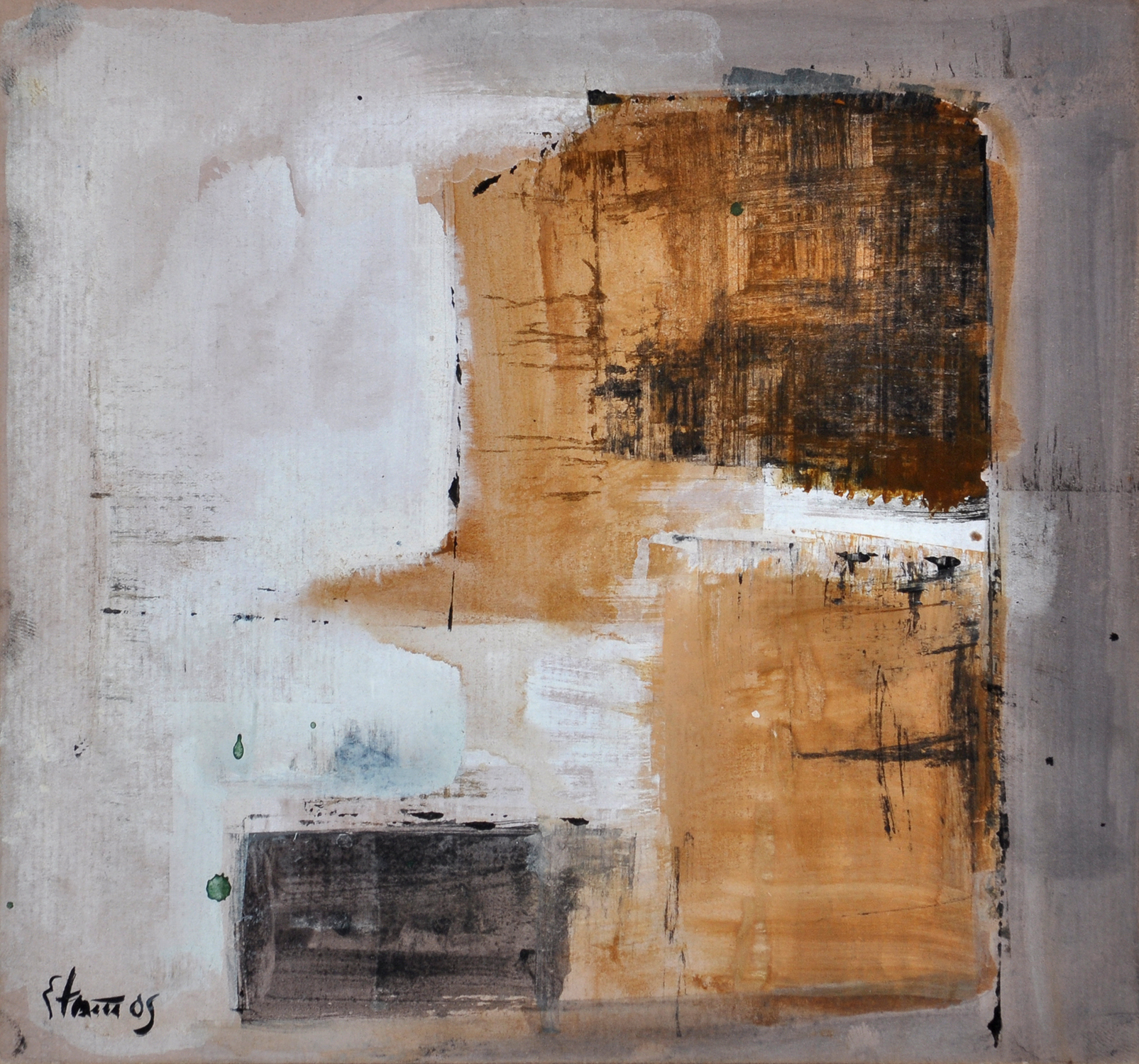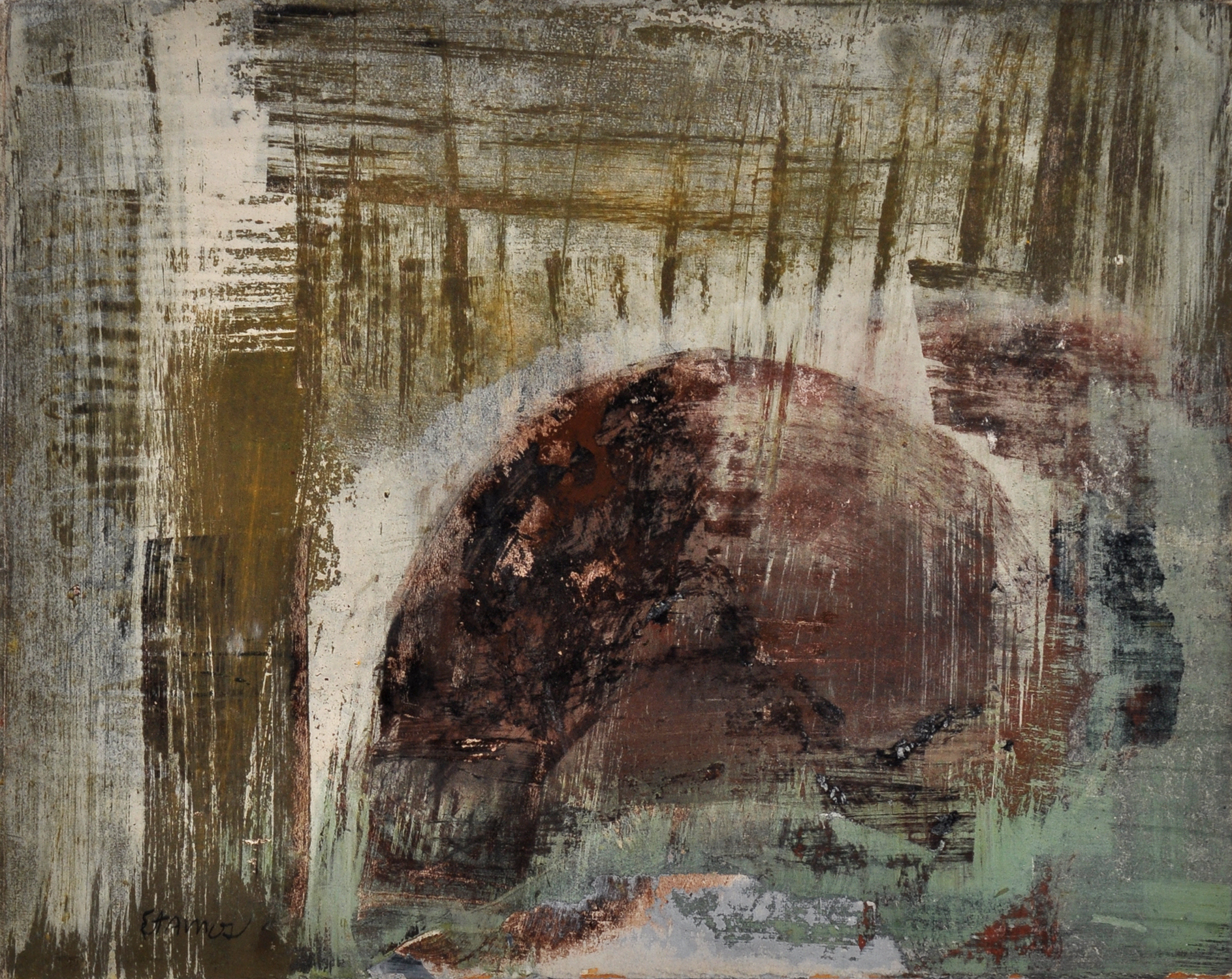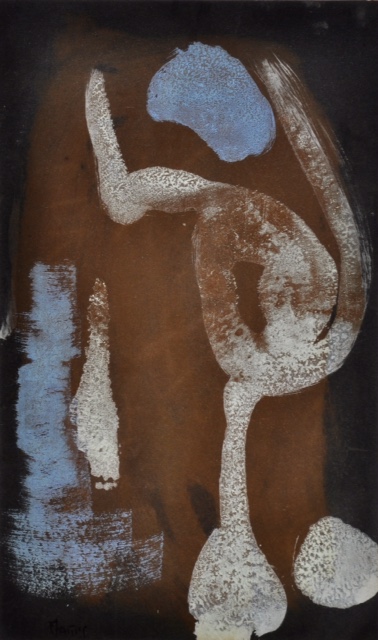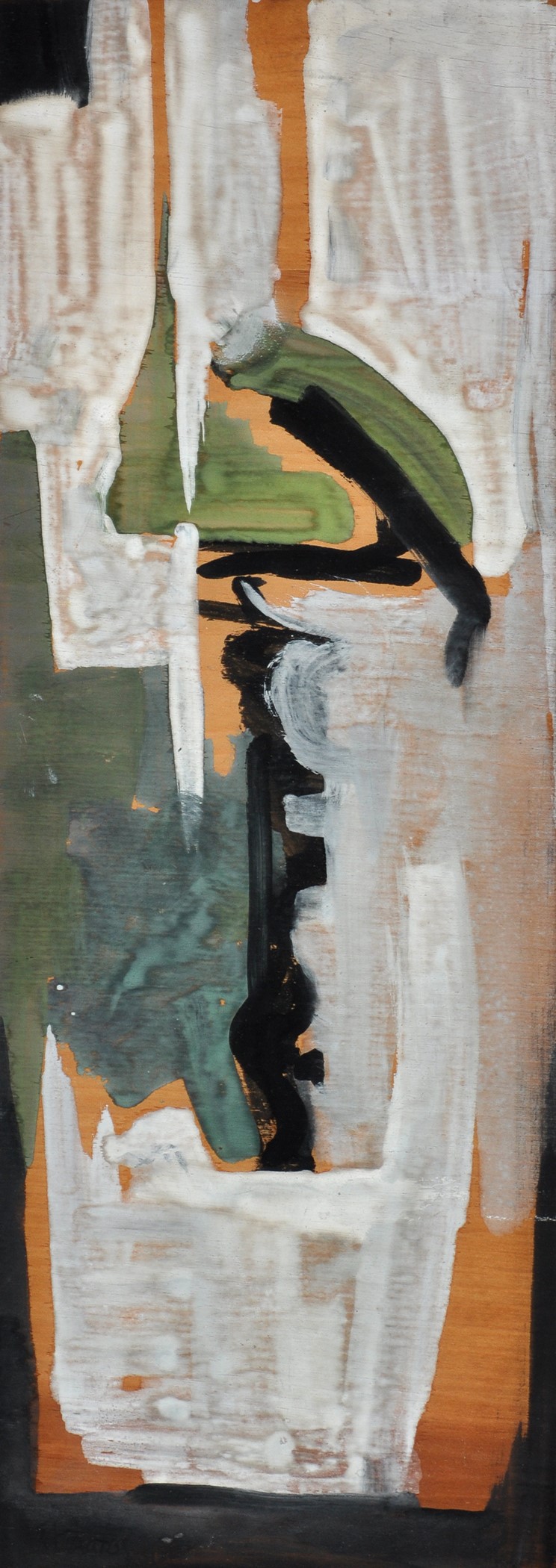Theodoros Stamos - the early years.
Theodoros Stamos was always interested in the effects achieved directly with colour, texture and abstract composition. He first experimented with Surrealism and the biomorphic forms that so interested Gottlieb, Baziotes and Rothko; then with just as much exuberance he went on in the fifties to immerse himself in Abstract Expressionism - and all of this was done at an age when most artists are still just leaving collage.
Theodoros Stamos was New Yorker , born and bred. He was born of Greek parents on East Eighteen Street in 1922 and lived in the city for most of his life. His parents had no artistic background and it was a photograph of a work by Jacob Epstein - one of his monsters- Stamos recalls copying onto a portable child's blackboard that is his first recollection of any artistic tendency at the age of about 8 years. Six years later at the age of 14 years he won a scholarship to attend the American Artists School where he was encouraged by Joe Soloman, who was part of a group known as "The Ten" which included Rothko, Gottlieb and Louis Schanker. Soloman also introduced him to the work of Arthur Dove and there is little doubt that his work from the 1930's influenced Stamos's work of the early 1940's. In addition he saw, and was influenced by the work of Paul Klee and Milton Avery.
Incredibly, Stamos held his first one man show when he was jut 20 years of age. In 1943 at the Wakefield Gallery run at the time by Betty Parsons, and when she moved on to become director of the Mortimer Brandt Gallery contemporary section she put on another show for Stamos in 1945. So, she was clearly a fan of his work and it is of little surprise that when she set up her own gallery in 1947 Theodoros Stamos was one of the first exhibitions. It is perhaps interesting to note that Barnett Newman was also one of the string of artists attached to the new gallery as was Hedda Sterne, Hofmann, Still and many others. Many of the artists employed similar styles and imagery which originated from nature and particularly the sea and it was a leading critic of the time , Lawrence Alloway, who gave these painters a collective name of Biomorphic Painters.
It was for the first show of Stamos that Barnett Newman wrote the following by way of introducing his work to the New York art world.
"The work of Theodoros Stamos, subtle and sensuous as it is, reveals an attitude toward nature that is closer to true communion. His ideographs capture the moment of totemic affinity with the rock and the mushroom, the crayfish and the seaweed.......one might say that instead of going to the rock he comes out of it...........
Stamos is able therefore, to catch not only the glow of an object in all its splendour but its inner life and all its dramatic implications of terror and mystery . In doing so he makes clear the important difference between the sense of nature and the act of worship."
After his 1947 exhibition he travelled to Europe and visited France , Italy and Greece. We, here at Blondes Fine Art in Hertfordshire , England, have two pieces by Stamos from this period that are currently offered for sale. Both are in excellent condition and come from a private European collection originally purchased from Turske Fine Art in Zurich. Both work are clearly signed and one tiled and dated. The two other pieces available are a little later, one from 1949 a Y Band series work , where he utilises abstract Y-like bands to create a powerful composition using transparent and iridescent metallic paints. This painting is almost calligraphic in quality and similar to a number of works produced by Stamos during this period of the late 1940's. Finally, we have a lovely work on board which is influenced by his interest in the oriental although undated it is from the early 1950's and similar stylistically to a number of his Teahouse series of works.
Please do contact us for more information about the available works.



